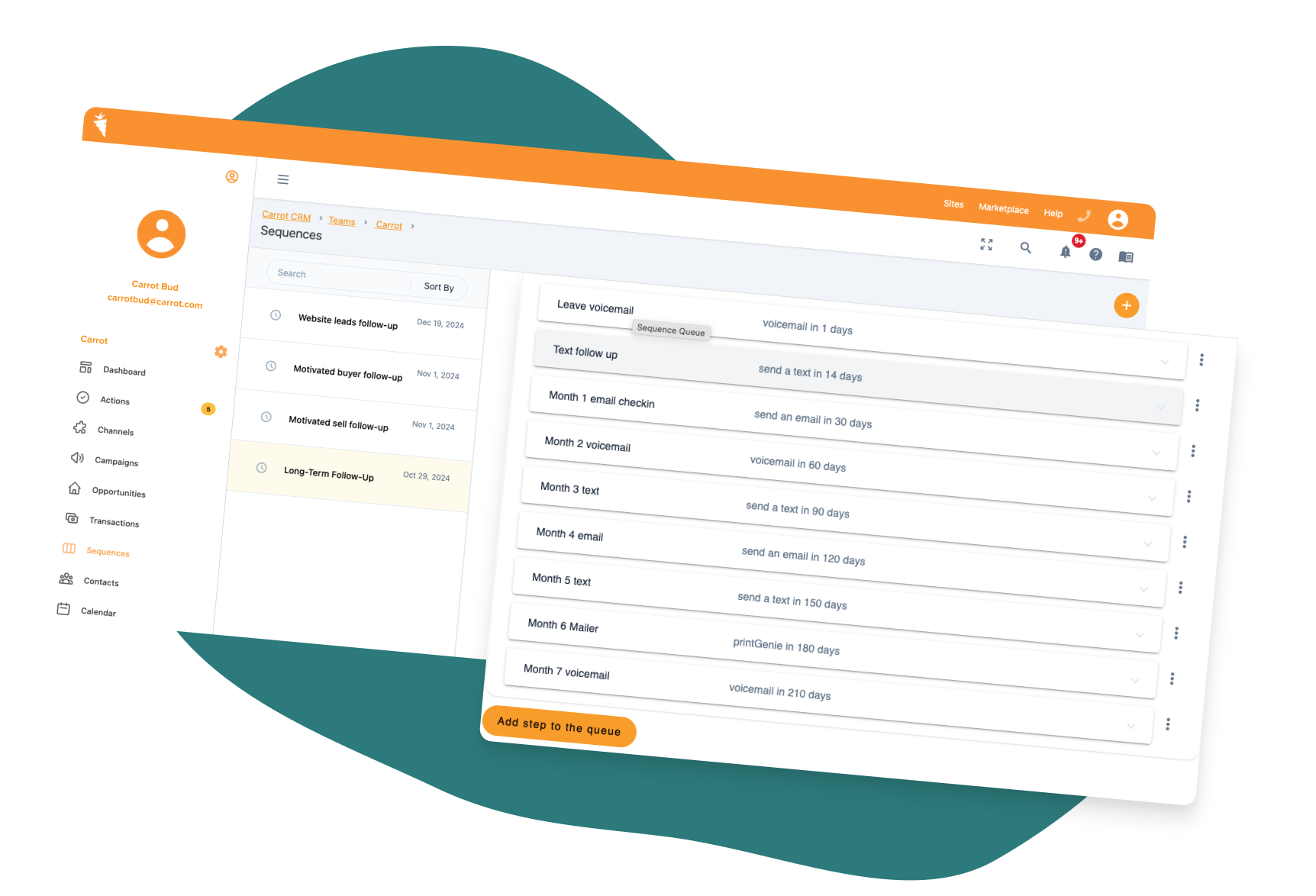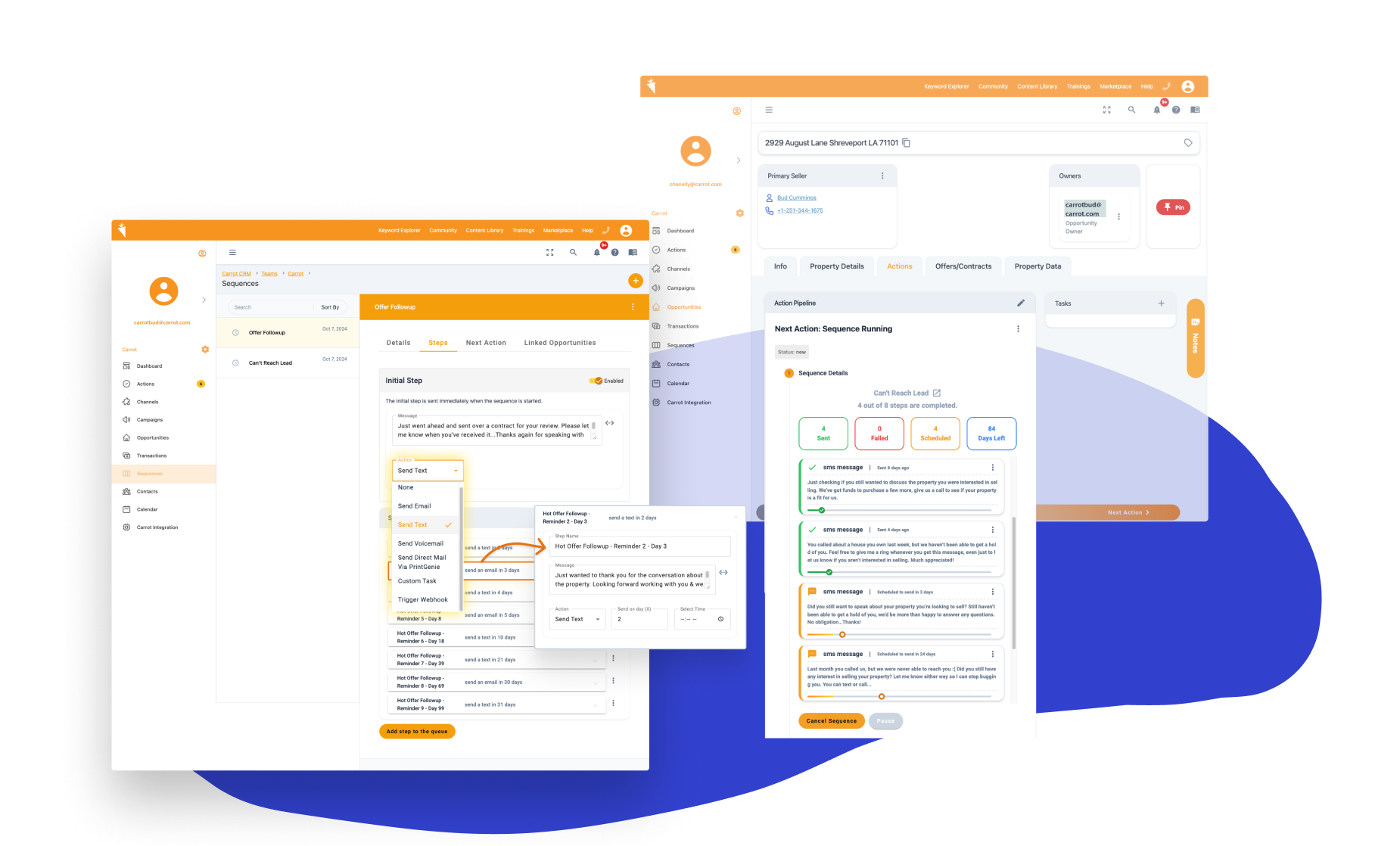
CRM for Automated Outreach Sequences: Turbocharging Your Sales and Marketing
In today’s hyper-competitive business landscape, standing out from the noise is a Herculean task. Traditional marketing methods are often ineffective, and sales teams are stretched thin trying to personalize every interaction. Enter the dynamic duo of Customer Relationship Management (CRM) systems and automated outreach sequences. Together, they form a powerful alliance that can revolutionize your sales and marketing efforts, driving engagement, boosting conversions, and fostering lasting customer relationships.
Understanding the Power of CRM
At its core, a CRM is a centralized hub for managing all your interactions and data related to customers and prospects. It’s more than just a digital Rolodex; it’s a strategic tool that provides a 360-degree view of each contact, including:
- Contact Information: Names, email addresses, phone numbers, social media profiles, and more.
- Interaction History: A chronological record of all communications, including emails, calls, meetings, and website visits.
- Purchase History: Details of past purchases, subscriptions, and services used.
- Demographic and Firmographic Data: Information about the customer’s industry, company size, location, and other relevant details.
- Engagement Metrics: Data on how customers interact with your website, emails, and social media content.
- Custom Fields: Tailored data points specific to your business needs.
By consolidating this information, a CRM empowers your sales and marketing teams to:
- Personalize Interactions: Understand each customer’s unique needs and preferences.
- Track Progress: Monitor the status of leads and opportunities through the sales pipeline.
- Improve Communication: Ensure consistent and relevant messaging across all channels.
- Increase Efficiency: Automate repetitive tasks and streamline workflows.
- Make Data-Driven Decisions: Analyze customer data to identify trends and optimize strategies.
The Magic of Automated Outreach Sequences
Automated outreach sequences are a series of pre-written messages (emails, SMS, social media interactions, etc.) designed to nurture leads and guide them through the sales funnel. These sequences are triggered by specific actions or events, such as:
- Subscribing to a Newsletter: Welcome emails and introductory content.
- Downloading a Resource: Follow-up emails with related information.
- Visiting a Pricing Page: Targeted offers and case studies.
- Abandoning a Shopping Cart: Reminders and incentives to complete the purchase.
- Reaching a Milestone: Personalized congratulations and support.
The beauty of automated outreach lies in its ability to:
- Scale Your Efforts: Reach a large number of prospects without sacrificing personalization.
- Maintain Consistency: Ensure that every lead receives the same high-quality experience.
- Improve Engagement: Deliver timely and relevant information that resonates with each prospect.
- Increase Conversion Rates: Guide leads through the sales funnel with targeted messaging.
- Save Time and Resources: Free up your sales and marketing teams to focus on more strategic tasks.
CRM + Automated Outreach: A Match Made in Heaven
When you combine the power of CRM with automated outreach sequences, you create a synergistic effect that can dramatically improve your sales and marketing performance. Here’s how:
-
Targeted Segmentation: Your CRM data allows you to segment your audience based on demographics, behavior, and other criteria. This enables you to create highly targeted outreach sequences that resonate with specific groups of prospects.
-
Personalized Messaging: By integrating your CRM with your outreach platform, you can automatically insert personalized information into your messages, such as the prospect’s name, company, job title, and past interactions with your brand.
-
Behavior-Based Triggers: Your CRM can track how prospects interact with your website, emails, and other marketing materials. This data can be used to trigger automated outreach sequences based on specific behaviors, such as visiting a certain page or downloading a particular resource.
-
Dynamic Content: Some CRM and outreach platforms allow you to dynamically adjust the content of your messages based on the prospect’s profile or behavior. This ensures that each prospect receives the most relevant and engaging information possible.
-
Lead Scoring and Prioritization: Your CRM can assign scores to leads based on their engagement and likelihood to convert. This allows you to prioritize your sales efforts and focus on the most promising prospects.
-
Automated Task Management: Your CRM can automatically create tasks for your sales team based on the actions of prospects in your outreach sequences. For example, if a prospect clicks on a link in an email, the CRM can create a task for a salesperson to follow up with a phone call.
-
Performance Tracking and Optimization: Your CRM and outreach platform can track the performance of your automated sequences, including open rates, click-through rates, and conversion rates. This data can be used to optimize your sequences and improve their effectiveness.
Examples of Automated Outreach Sequences
Here are a few examples of how you can use CRM and automated outreach sequences to improve your sales and marketing efforts:
-
Welcome Sequence: When a new prospect subscribes to your newsletter, trigger a welcome sequence that introduces your brand, provides valuable content, and encourages them to take the next step.
-
Lead Nurturing Sequence: When a prospect downloads a resource from your website, trigger a lead nurturing sequence that provides additional information about your products or services, shares case studies, and offers a free consultation.
-
Sales Follow-Up Sequence: After a sales call or meeting, trigger a follow-up sequence that summarizes the key points discussed, provides additional resources, and encourages the prospect to move forward in the sales process.
-
Customer Onboarding Sequence: When a new customer signs up for your product or service, trigger an onboarding sequence that guides them through the setup process, provides helpful tips, and offers ongoing support.
-
Re-Engagement Sequence: If a customer hasn’t interacted with your brand in a while, trigger a re-engagement sequence that offers a special discount, highlights new features, or invites them to provide feedback.
Choosing the Right CRM and Outreach Platform
With so many CRM and outreach platforms on the market, it can be challenging to choose the right ones for your business. Here are a few factors to consider:
- Features: Make sure the platform has the features you need to manage your customer data and automate your outreach sequences.
- Integration: Choose a platform that integrates seamlessly with your existing tools and systems.
- Ease of Use: The platform should be easy to use and intuitive, so your team can quickly get up to speed.
- Scalability: The platform should be able to scale with your business as you grow.
- Pricing: Consider the pricing model and make sure it fits your budget.
Popular CRM platforms with strong outreach capabilities include Salesforce, HubSpot, Zoho CRM, and Pipedrive. There are also dedicated outreach platforms like Outreach.io and SalesLoft that integrate with various CRMs.
Best Practices for Automated Outreach
- Personalize Your Messages: Use CRM data to personalize your messages as much as possible.
- Provide Value: Focus on providing valuable information and resources that will help your prospects.
- Keep It Concise: Get to the point quickly and avoid overwhelming your prospects with too much information.
- Use a Clear Call to Action: Tell your prospects what you want them to do next.
- Test and Optimize: Continuously test and optimize your sequences to improve their effectiveness.
- Monitor Your Results: Track your results and make adjustments as needed.
- Comply with Regulations: Ensure that your outreach sequences comply with all relevant regulations, such as GDPR and CAN-SPAM.
Conclusion
CRM and automated outreach sequences are a powerful combination that can help you transform your sales and marketing efforts. By leveraging the data in your CRM to create personalized and targeted outreach sequences, you can improve engagement, increase conversion rates, and foster lasting customer relationships. With the right tools and strategies, you can unlock the full potential of your sales and marketing efforts and drive sustainable growth for your business.

